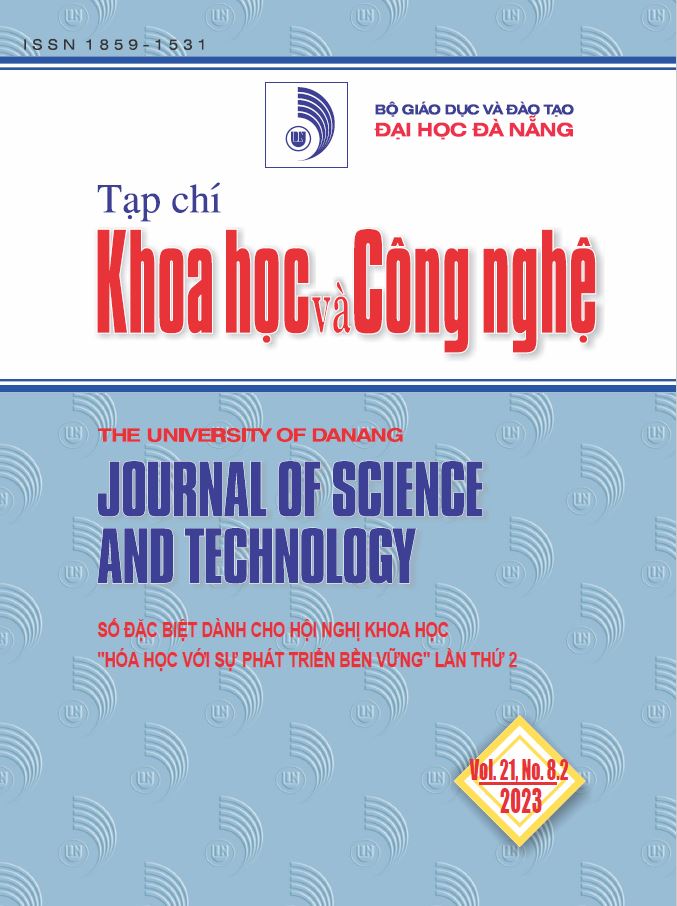Isolation and screening for Streptomyces strain capable of efficient feather degradation
 Tóm tắt: 155
Tóm tắt: 155
 |
|  PDF: 97
PDF: 97 
##plugins.themes.academic_pro.article.main##
Author
-
Nguyen Thi Dong PhuongThe University of Danang - University of Science and Technology, Danang, VietnamNguyen Tran Huyen AnhThe University of Danang - University of Science and Technology, Danang, VietnamNguyen Hoang Trung HieuThe University of Danang - University of Science and Technology, Danang, Vietnam
Từ khóa:
Tóm tắt
Feathers cause environmental problems worldwide when poultry processing industries produce it as a waste of billions of tons yearly. This waste is not easily decomposed by natural agents in a short time. Currently, Streptomyces spp. are known as a highly enzymatic activity species which can efficiently degrade feathers to products. Therefore, the aim of this study was to screen for Streptomyces strains with high feather-degrading activity.
A total of 46 strains of Streptomyces spp. were isolated from different soils of Danang city and other vicinities, in which
13 isolates showed the ability to degrade casein and gelatin. The protease activity of H3, N5, and N7 isolates were higher than others. In particular, N7 strain had the highest protease activity with 70.33 U/mL and degraded 97.79% feather after 5 days of cultivation. Based on the sequence analysis of 16S rRNA, N7 was identified as homologous to Streptomyces anandii.
Tài liệu tham khảo
-
[1] Grazziotin et al., "Nutritional improvement of feather protein by treatment with microbial keratinase", Animal feed science and technology, vol. 126, no. 1-2, pp. 135-144, 2006.
[2] Hadas and L. Kautsky, “Feather meal, a semi-slow-release nitrogen fertilizer for organic farming”, Fertilizer Research, vol. 38, pp. 165-170, 1994.
[3] Kumar, P. Kumar, and R. K. S. Kushwaha, “Significance of keratinophiles in biofertilizer development from keratinous waste: upcoming perspective”, In Biofertilizers, Woodhead Publishing, 2021, pp. 95-101.
[4] M. Tapia and M. L. G. Simões, “Production and partial characterization of keratinase produced by a microorganism isolated from poultry processing plant wastewater”, African Journal of Biotechnology, vol. 7, no. 3, pp. 296-300, 2008.
[5] Tiwary and R. Gupta, “Rapid conversion of chicken feather to feather meal using dimeric keratinase from Bacillus licheniformis ER-15”, J. Bioprocess Biotech, vol. 2, no. 4, p. 1000123, 2012.
[6] Dworkin, S. Falkow, E. Rosenberg, K. H. Schleifer, and E. (Eds.). Stackebrandt, “The Prokaryotes: Volume 3: Archaea. Bacteria: Firmicutes, Actinomycetes”, Springer New York, 2006, pp. 843-933.
[7] P. Chao, F. H. Xie, Y. Jing, J. H. Lu, and S. J. Qian, “Screening for a new Streptomyces strain capable of efficient keratin degradation”, Journal of environmental sciences, vol. 19, no. 9, pp. 1125-1128, 2007.
[8] Jain, A. Jain, N. Rawat, M. Nair, and R. Gumashta, “Feather hydrolysate from Streptomyces sampsonii GS 1322: A potential low-cost soil amendment”, Journal of bioscience and bioengineering, vol. 121, no. 6, pp. 672-677, 2016.
[9] A. Alamoudi et al., “Isolation, Identification and Characterization of Keratin-Degrading Streptomyces rochei AM8”, J Pure Appl Microbiol, vol. 16, no. 3, pp. 2045-2054, 2022.
[10] Manivasagan, J. Venkatesan, K. Sivakumar, and S. K. Kim, “Production, characterization and antioxidant potential of protease from Streptomyces sp. MAB18 using poultry wastes”, BioMed Research International, vol. 2013, p. 496586, 2013.
[11] Ceylan, G. Okmen, and A.l Ugur. "Isolation of soil Streptomyces as source antibiotics active against antibiotic-resistant bacteria", EurAsian Journal of BioSciences, vol. 2, pp. 73-82, 2008.
[12] C.-Enyard, “Sigma's non-specific protease activity assay-casein as a substrate”, JoVE, vol. 19. p. e899, 2008.
[13] C. Jenkins and M. A. McGuire, “Major advances in nutrition: impact on milk composition”, Journal of dairy science, vol. 89, no. 4, pp. 1302-1310, 2006.
[14] Riffel and A. Brandelli, “Keratinolytic bacteria isolated from feather waste”, Brazilian Journal of Microbiology, vol. 37, pp. 395-399, 2006.
[15] Selvam, B. Vishnupriya, and M. Yamuna, “Isolation and description of keratinase producing marine actinobacteria from South Indian Coastal Region”, African Journal of Biotechnology, vol. 12, no. 1, pp. 19-26, 2013.
[16] A. Moonnee, M. J. Foysal, A. Hashem, and M. F. Miah, “Keratinolytic protease from Pseudomonas aeruginosa for leather skin processing”, Journal of Genetic Engineering and Biotechnology, vol. 19, no. 1, pp. 1-9, 2021.
[17] S. Lucas et al., "High Diversity among Feather-Degrading Bacteria from a Dry Meadow Soil", Microb Ecol, vol. 45, pp. 282-290, 2003.
[18] Bach, D. J. Daroit, A. P. F. Corrêa, and A. Brandelli, “Production and properties of keratinolytic proteases from three novel Gram-negative feather-degrading bacteria isolated from Brazilian soils”, Biodegradation, vol. 22, pp. 1191-1201, 2011.
[19] Gupta, Q. Beg, and P. Lorenz, “Bacterial alkaline proteases: molecular approaches and industrial applications”, Applied microbiology and biotechnology, vol. 59, pp. 15-32, 2002.
[20] Gupta and P. Ramnani, “Microbial keratinases and their prospective applications: an overview”, Applied microbiology and biotechnology, vol. 70, pp. 21-33, 2006.
[21] A. Hamid, S. Ariffin, and S. A. S. Mohamad, “Identification and optimal growth conditions of actinomycetes isolated from mangrove environment”, Malaysian J Anal Sci, vol. 19, no. 4, pp. 904-910, 2015.
[22] K. Batra and B. S. Bajaj, "Streptomyces anandii--a new species of Streptomyces isolated from soil", Indian Journal of Experimental Biology, vol. 3, no. 4, pp. 240-242, 1965.
[23] D. M. Balitz et al., "Antitumor agents from Streptomyces anandii: gilvocarcins V, M and E.", The Journal of antibiotics, vol. 34, no. 12, pp. 1544-1555, 1981.



